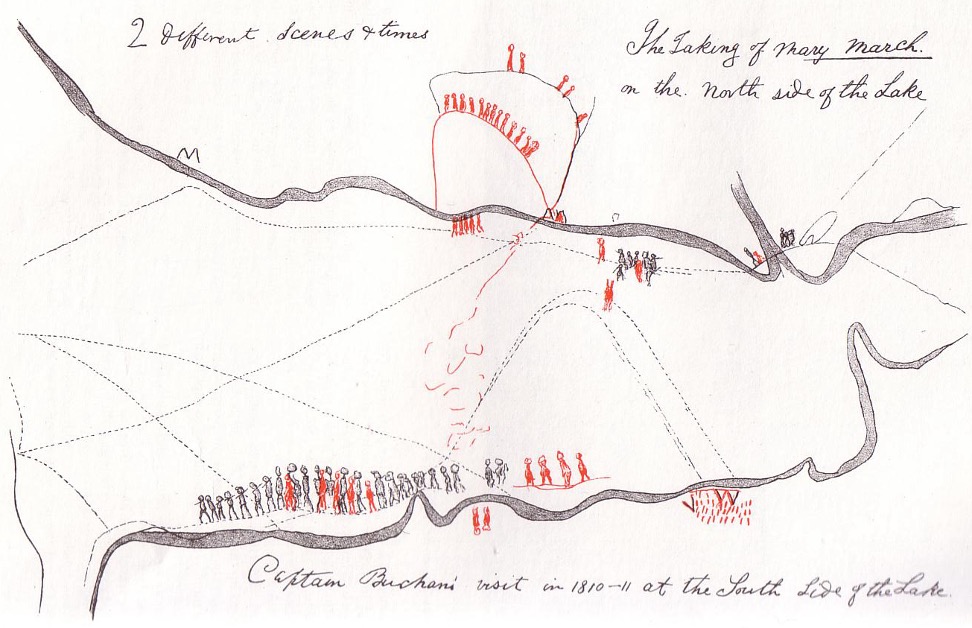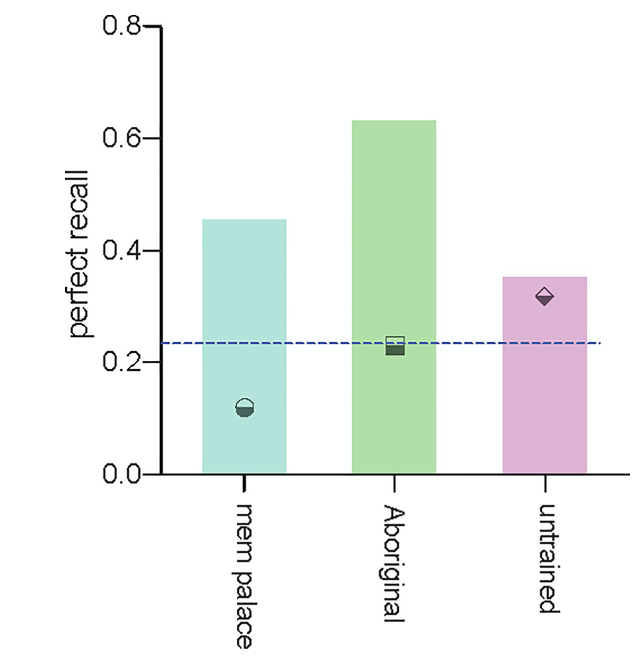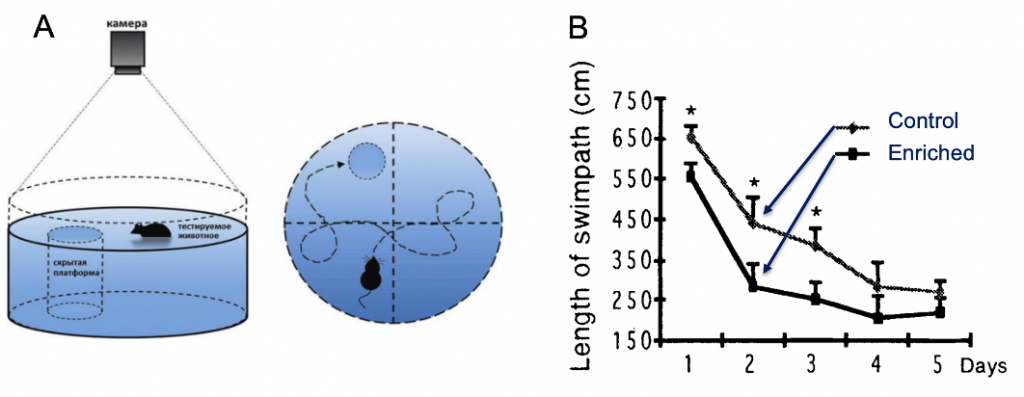46 Spatial Memory
Learning Objectives
- Define spatial memory and discuss its function
- Describe how spatial memory techniques can enhance memorization
- Describe strategies used to study spatial memory in humans and non-human animals
An important job of our memory systems is to keep track of locations where our experiences happen; they act as anchors for our personal memories. Consider this: all of your cherished personal memories happened in a particular place and it’s difficult to imagine the event without it. In order to recall a location later, it must be encoded quickly at the time an event is happening, along with many other details you’ll need in order to recall the experience later. Because we’re mobile creatures, the places where memories happen are constantly changing so our memory systems are designed to create mental maps quickly. Not only is spatial memory encoded quickly, it’s also quite accurate. The image below was drawn from memory by Shanawdithit, an Indigenous woman who was the last known survivor of the Beothuk peoples, an Indigenous population who formerly inhabited territory now known as Newfoundland and Labrador (Canada; Figure M.8). Although Shanawdithit had no prior experience with pen and paper, she was able to recreate the physical space with detailed accuracy using her memory.

Our cognitive map-making abilities are the basis of some tried and true memory enhancing techniques. The method of loci approach, or memory palace, was used by the ancient Greeks and Romans to remember long speeches. To do this, the individual forms mental images of words or objects and places them in specific locations along a familiar route. To retrieve this information, the individual takes a mental stroll through the familiar space. Memory contest champions use this technique, which can be easily mastered with some practice. In fact, after covering the American Memory Championship as a journalist, Joshua Foer practiced this and other memory techniques and returned to win the competition the following year (Foer, 2011). A study of undergraduates showed an improvement in word list recall after they learned the memory palace technique from Foer’s book as part of the course (McCabe, 2015).
An even older spatial memory technique used by Indigenous populations living in Australia (i.e., Aboriginal peoples living in Australia) involves creating a story in an actual physical space, using elements in the environment as part of the narrative. Among Aboriginal populations living in Australia, these stories tend to remarkably remain consistent over decades and centuries. Likely, because the stories are diligently learned, protected and “passed down” by Aboriginal Elders (Sveiby & Skuthorpe, 2006). One study compared this Aboriginal spatial memory technique to the memory palace technique as a way for medical students to learn the cellular reactions of the tricarboxylic acid cycle (Reser et al., 2021). Students who were guided by an Indigenous Educator through a landscape-based narrative outperformed those who were taught the memory palace technique and untrained controls (Figure M.9). These results show that the incorporation of spatial memory skills into education could help improve memorization, because they take advantage of our natural ability for encoding and storing spatial information.

Non-human animals also rely on spatial memory for their survival, tasks like finding food and escaping dangers are critically dependent upon knowledge of the physical environment. Edward Tolman and colleagues demonstrated the existence of mental maps in rats in the 1930’s with a simple experiment. They tested performance on a complex maze every day for three weeks under three different conditions: no food reward, food reward, and food reward after day 10. On day 11, the rats who received food for the first time showed performance similar to those rewarded food every day (Figure M.10). These findings suggest that, even though these rats were not rewarded from days 1-10, they created a mental map of space that they could use when needed, a phenomenon known as latent learning (Tolman, 1948). Although this latent learning task was useful in showing that rodents use mental maps, other tests are better suited to measuring spatial learning and memory in animals.

The most commonly used measure of spatial memory in laboratory rodents is the Morris Water Maze, developed by Scottish neuroscientist Richard Morris. It’s simply a pool filled with opaque water with a platform just underneath the surface. Rodents don’t like swimming, so they instinctively search for a way out and eventually find the platform to escape from the water. On subsequent trials, they usually swim straight to the location of the platform. Spatial learning can be measured by escape time or path length, with shorter times and distances indicating better performance (Vorhees & Williams, 2014l; Figure M.11). This test has been crucial in revealing factors that inhibit spatial memory, like brain injuries or drugs like alcohol, and those that enhance memory, such as exercise and environmental enrichment. Laboratory mice living in enriched conditions with nesting materials, toys, and running wheels show shorter swim paths than those housed under standard laboratory conditions (Kempermann et al, 1997, Figure X.X).

TRICKY TOPIC: SPATIAL MEMORY
If the video above does not load, click here: https://youtu.be/7IV3ySuJ8mQ
For a full transcript of this video, click here

